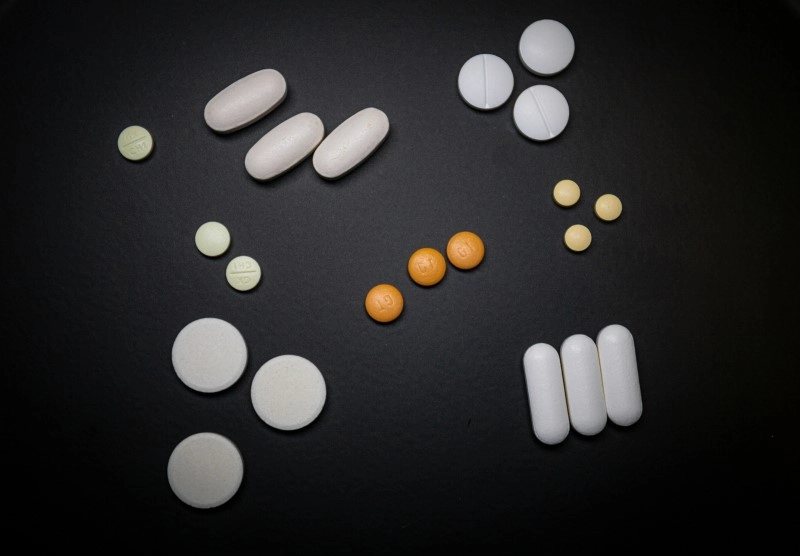- This topic is empty.
-
AuthorPosts
-
2025-06-17 at 4:31 pm #4477
S-Adenosyl-L-Methionine Disulfate Tosylate (CAS No.: 97540-22-2) is a natural compound that exists in almost all cells of the human body and plays a key role in cell metabolism and biochemical transmethylation reactions. It acts as a methyl donor in more than 100 biochemical reactions involving nucleic acids, proteins, phospholipids and neurotransmitters. In this blog post, SACH, a high purity fine chemical products manufacturing factory, will share the efficacy of natural bioactive S-Adenosyl-L-Methionine Disulfate Tosylate for sale.
S-Adenosyl-L-Methionine Disulfate Tosylate Molecular Structure and Stability
SAMe is inherently unstable in its free base form and prone to degradation by oxidation, racemization, and deamination. The disulfate tosylate salt form enhances its chemical stability, solubility, and shelf life. Structurally, SAMe-DST consists of a sulfonium ion core, which is highly reactive and central to its biochemical activity. The disulfate anion stabilizes the molecule, while the tosylate counterion contributes to improved pharmacological handling by increasing its hydrophilicity and bioavailability. This makes SAMe-DST suitable for oral and parenteral administration, a crucial property for its use in clinical therapeutics.
Mechanisms of Action of S-Adenosyl-L-Methionine Disulfate Tosylate
SAMe serves as a key methyl donor in transmethylation reactions, converting to S-adenosylhomocysteine (SAH) upon donating a methyl group. This methylation process is critical for epigenetic regulation, neurotransmitter synthesis, phospholipid methylation, and polyamine biosynthesis. Key pathways include:
1. DNA Methylation: SAMe contributes to epigenetic regulation through methylation of DNA and histone proteins, impacting gene expression patterns.
2. Neurotransmitter Synthesis: SAMe is integral to the biosynthesis and metabolism of monoamine neurotransmitters, such as serotonin, dopamine, and norepinephrine.
3. Hepatic Function: SAMe supports glutathione production, thus playing an antioxidant role in hepatocytes and protecting against oxidative damage and apoptosis.
4. Joint and Cartilage Health: SAMe promotes proteoglycan synthesis in chondrocytes, supporting cartilage integrity and reducing inflammatory cytokines in joint tissues.

S-Adenosyl-L-Methionine Disulfate Tosylate Pharmacokinetics and Bioavailability
SAMe-DST exhibits relatively favorable pharmacokinetics compared to other SAMe salts. Oral bioavailability is approximately 2–3%, limited primarily by first-pass metabolism and instability in the gastrointestinal tract. However, enteric-coated formulations of SAMe-DST have demonstrated significantly improved stability and absorption in the small intestine.
Upon absorption, SAMe reaches peak plasma concentrations within 3 to 5 hours. It crosses the blood-brain barrier and accumulates in central nervous system tissues, an important feature for its neurological applications. SAMe is primarily metabolized in the liver, and its metabolites, including methylated compounds and SAH, are further processed through the transsulfuration and remethylation pathways.
Clinical Applications of S-Adenosyl-L-Methionine Disulfate Tosylate
1. Depression and Mood Disorders
Several double-blind, placebo-controlled trials have demonstrated the antidepressant efficacy of SAMe-DST. Its role in increasing the synthesis of serotonin, dopamine, and norepinephrine makes it a valuable adjunct or alternative to conventional antidepressants. In comparative studies, SAMe has shown similar efficacy to tricyclic antidepressants (e.g., imipramine) with a more favorable side effect profile.
Meta-analyses indicate that SAMe-DST may be particularly effective in patients with treatment-resistant depression or those intolerant to selective serotonin reuptake inhibitors (SSRIs). Its onset of action is also typically faster, often within two weeks.
2. Liver Disorders
SAMe-DST has been investigated extensively in hepatic pathologies, including intrahepatic cholestasis, non-alcoholic fatty liver disease (NAFLD), and alcoholic liver disease. Its hepatoprotective effects are mediated through enhanced glutathione synthesis, stabilization of hepatocyte membranes, and detoxification processes.
Clinical trials have shown improvements in liver enzyme profiles (ALT, AST, GGT) and histological liver health in patients receiving oral or intravenous SAMe-DST. Additionally, SAMe may help in preventing hepatic fibrosis by modulating stellate cell activation and reducing oxidative stress.
3. Osteoarthritis
SAMe-DST has been used as a symptomatic slow-acting drug for osteoarthritis (SYSADOA). It alleviates joint pain and stiffness through its anti-inflammatory and cartilage-protective actions. SAMe enhances the synthesis of proteoglycans and glycosaminoglycans, essential components of cartilage matrix, while reducing the activity of inflammatory mediators such as IL-1β and TNF-α.
In randomized controlled trials, SAMe-DST has demonstrated efficacy comparable to nonsteroidal anti-inflammatory drugs (NSAIDs) such as naproxen and ibuprofen, with fewer gastrointestinal side effects.
4. Fibromyalgia
Emerging evidence supports the use of SAMe-DST in managing fibromyalgia symptoms, particularly fatigue, pain, and mood disturbances. By modulating central pain processing and neurotransmitter balance, SAMe may offer a holistic benefit in fibromyalgia patients, although more large-scale trials are needed.

Comparative Advantages of SAMe-DST
Compared to other formulations (e.g., SAMe tosylate, butanedisulfonate), SAMe-DST provides superior:
* Chemical Stability: Resistance to hydrolysis and oxidation.
* Pharmacological Potency: Enhanced methylation activity in biological systems.
* Shelf Life and Handling: Less degradation during storage and formulation processes.
* Therapeutic Spectrum: Effective in diverse clinical indications due to systemic bioactivity.
Moreover, natural bioactive SAMe-DST, derived from fermentation of *Saccharomyces cerevisiae* or *Bacillus subtilis*, ensures higher biocompatibility and reduced risk of xenobiotic reactions compared to fully synthetic analogs.
Conclusion
Natural bioactive S-Adenosyl-L-Methionine Disulfate Tosylate is a potent, multifaceted compound with broad therapeutic applications rooted in its biochemical role as a universal methyl donor. Its efficacy in treating mood disorders, liver dysfunction, osteoarthritis, and fibromyalgia is supported by a robust body of clinical evidence.
-
AuthorPosts
- You must be logged in to reply to this topic.
